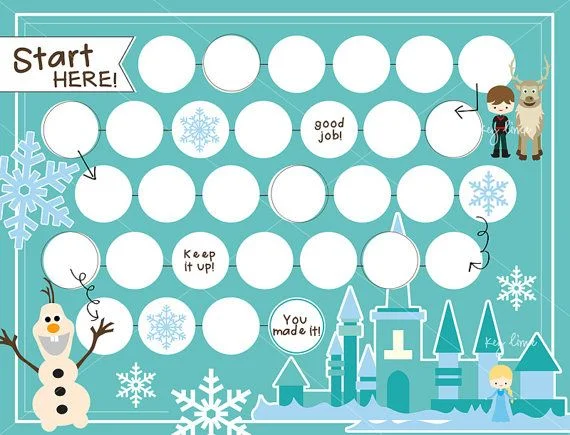Impulse Control
— Teach child to control impulses using games like Simon Says
— Remind them to STOP and THINK
— Raise your hand silently as a cue to raise hand if child is calling out and wait to call on them until they raise their hand (ignore them if they call out)
Reduce Distractions
— Eliminate/avoid distractions in the room as much as possible
— Sit ADHD child in FRONT of the class so they avoid distractions such as other students
— Sit child so they do NOT face window, doors, highly decorated areas of the room
— Sit away from toys and computers
— Use a file folder “office” to block distractions
— For tests sit in quiet section like back of room where less children are around
Keeping organized and on task
— Many kids with ADHD cannot keep themselves regulated in If you can’t keep things regulated/organized INTERNALLY (in your head) you have to do so EXTERNALLY such as using calendars, to do lists, charts, sticky note reminders, etc
— Help kids stay on task using Timers (www.timetimer.com), make reminder notes, have visual schedules, mark backpack/folders with reminder notes, completion checklists, picture schedule of the day, and other visual reminders
Reward systems/motivators
— Often children with ADHD, and ODD, and other behavior disorders (Autism, Disruptive Behavior Disorder, etc) do not have the internal motivation or desire to want to perform well, please parents/teachers, or achieve/succeed within themselves. (Let’s face it we all have those days we’d rather play than work or learn! ) So they need EXTERNAL MOTIVATORs such as incentive/reward charts, tokens, behavior systems, earned allowance, etc. Basically find out what they want and then help them get that with doing the expected/preferred behavior.
— Reward systems/charts should be individualized, tailored to child’s wants, needs and interests. If child is NOT interested/doesn’t want the reward, its too hard to achieve, or its not related to them, they are highly unlikely to utilize it and actually do what you are requesting.
— Rewards DO NOT have to be Toys/Food (tangible) they can be –extra time, -special choice, -extra attention, -computer time at end of the day, -stickers, -coloring pages they enjoy, etc
— For younger children small token/reward charts work great. Make it achievable. They should be able to earn in an hour or day if they are very young, or weekly for kids who are a little older or have achieved daily rewards already.
— Older children should earn tickets/money/chips to cash in for prizes/rewards/ privileges
Other helpful tips
— place child closer to front of room, sit student next to a calmer student or away from distractions, call on child often to answer questions, or repeat back information, sit child in a chair versus on the floor
— Tap their desk/call name while teaching to get their attention
— Have them run errands/be helper for class to get out extra energy
Remind of expected behavior and establish reasonable consequences
— Tell children the expected behavior and the consequences if they don’t follow it – should be clear and concise. Remember if its simple they are more likely to hear it! For example “We are going to play musical chairs now. If you don’t follow the rules and get “out” when told, you can’t play the game again when we play next time” or “Now its time for art. If you splash the paint on the floor on purpose, you will have to sit out”.
Other disruptive behavior tips
— Out of seat on carpet/crawling around:
-try a chair, carpet square, move away a little from the group
· Talking to peers next to them:
- move them away from that peer, put them next to calmer/quieter kids (boy/girl/boy/girl can work)
· Fidgeting:
- try a fidget toy to hold (if that toy becomes distracter, take it away until they focus, then return toy to them to see if that helps. If not, fidget toys won’t work. )
-Sit on a fidget seat (School’s OT consultant should have one), exercise ball, or bean bag for extra sensory input.
— Butting in line/pushing children in line:
- put child at front or back of line, or several feet from others in line, remind of consequence “keep hands to yourself or you will have to go to back of line/lose recess/etc”
· Have child take a walk/movement activity before having to sit for a while
— Wandering around/not transitioning to correct center/activity:
- small chart/list of centers to choose from. They mark off each center they complete on the list.
— Not staying on task in the center:
- timer or task completion checklist
— Waiting/transition time - fidgeting/touching others/etc:
-suggest a wait game or sing songs during that time
Classroom Rewards and Consequences for everyone
— Can be individuals earning stickers/rewards/tokens or whole class/group earns a collective prize:
For example if everyone is quiet they get extra 5 minutes recess, or if they are following directions all week, they get a special activity on Friday
— Consequences could include sitting out of the activity, not being able to sit with a certain peer, losing a toy or other privilege, and call to parents
Remember:
— Be Consistent (keep rules the same)
— Be Fair (don’t always have one child be in trouble if several are doing same behaviors)
— Give Consequences/Follow through! (if you said it would be the consequence- then make sure it is! Child will learn from that and not keep making same mistakes!)
— Use Rewards !! (makes everyone more happy!)























